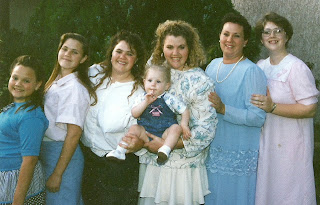When I attended the NAEYC conference a couple weeks ago, I attended a wonderful class on sensory boxes. I believed that the class was going to give me some great ideas on different sensory activities to do in sensory boxes, but instead, the focus of the class was on apparatuses that could be built on, above, and around sensory boxes. They were multiple leveled, or they had dividers, or they had holes in strange places, they allowed the children to move and transport the materials, but most of all, they provided opportunities for children to explore, discover, and problem solve.
When we talk about assessing children, what are we assessing? Last week I performed an observation on a child who both the teacher and the parents believed that she was very smart and too advanced for the rest of the class and wanted to know what they could do for her. After my observation two things were apparent to me: academically her cognitive skills in logical thinking, memorization, ability to pay attention, and representational and symbolic thinking were where they needed to be, but her ability to problem solve was low. Second, her social and emotional development was very low and her language development was slightly low. How can I say this child is advanced if she is only advanced in one area of development? I love the Teaching Strategies assessments that focus on the whole child: Social-Emotional, Physical, Language, and Cognitive. While each of these areas consists of several different aspects, it is important to realize that there is more to a child than just cognitive development. A child that knows all her ABC's and 1,2,3's but does not know how to make friends, trust others, recognize her own feelings or the feelings of others, or use thinking skills to resolve conflicts, is a child that still has a lot to work on. As her teachers are setting individualized goals for her, they may not be taking away continuing to teach cognitive skills, but instead they are focusing on social and emotional skills and insuring the are providing the right opportunities or her.
Many times the education system here in the United States puts early childhood education (education under the age of eight) in demand of shoving academics down children's throats. We are taking out the natural environment of learning "PLAY" and trying to force kids to sit down at table and memorize facts and do worksheets, and practice flashcards. How is that working for us?
A look at Finland. Did you know children do not start formal education there until they are seven years old? Prior to that they spend their time playing; learning through exploration, experiencing cause and effect, and trying things out on their own. They are self-directed learners who spend hours per day in outdoor classrooms or other environments that are conducive to learning the things they want to learn and interacting with others, without the pressure of rote memory or tests that will evaluate what they have learned. What is Finland's perspective? To take on a holistic approach, looking at their academic skills or readiness to begin to learn, their emotional and social development, their health status, and early identification of learning difficulties. Assessments are conducted individually, assigned and conducted by the teachers as well as self-evaluated by the students. The teachers determine the outcomes they want the children gain, and then assess based on that. Imagine a school system where everyone else isn't telling you exactly what the students are supposed to learn or how you have to teach them. The teachers can determine this based on the needs of their students. A school system where all children receive their health care and nutritional components provided for them free of cost, so these do not get in the way of their ability to learn. And a system where early childhood education is not only supported, but free and accessible to all who want it.
An interesting blog, the guardian, states:
"The Finnish curriculum is far less 'academic' than you would expect
of such a high achieving nation. Finnish students do the least number of
class hours per week in the developed world, yet get the best results
in the long term. Students in Finland sit no mandatory exams until the
age of 17-19. Teacher based assessments are used by schools to monitor
progress and these are not graded, scored or compared; but instead are
descriptive and utilised in a formative manner to inform feedback and
assessment for learning.
Great emphasis is put on pupil and
teacher trust and well-being. Outdoor, practical learning opportunities
and healthy related physical activity sessions are a regular feature in
the curriculum: helping to maintain a healthy body and mind."
http://www.theguardian.com/teacher-network/teacher-blog/2012/apr/09/finish-school-system
Are we pushing education too early, taking away the fun of learning, and discrediting the things children learn through play just because someone tells us that we need to test our kids at an early age?
Time to open an early childhood school for children 3-8 where they really learn through play the things they want and are ready to learn, a school that lets them explore and discover new things, a school that takes care of all the needs of the children, not just focuses on their academic achievements.























 A children's book I love is called I Love You the Purplest by Barbara Joosse
A children's book I love is called I Love You the Purplest by Barbara Joosse